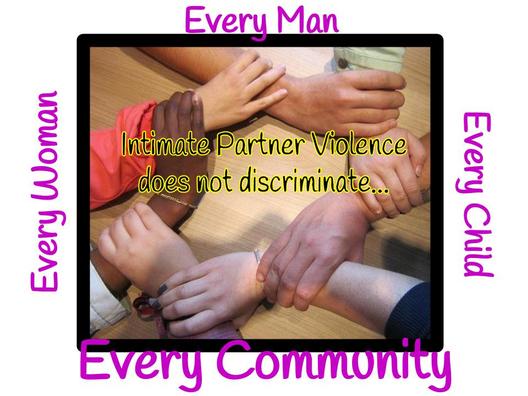|
By Sara Forcella, See the Triumph Contributor
Intimate partner violence is a global phenomenon― a public health concern which affects every community, in every state in the United States and beyond. While the effects of partner violence may be the most apparent and detrimental to those who are being directly abused, they ripple out into every aspect of our communities. A common misconception within most communities is believing that partner abuse does not occur. So frequently we think “maybe elsewhere, but not in this community”. We are unable to believe, or maybe even chose to ignore, the fact that many people within our own community face the reality of dealing with intimate partner violence. I urge you to consider that intimate partner violence does not discriminate; it does not take into account age, race, gender, sexuality, faith, or income. Even pets are affected by partner violence. Intimate partner violence alters a community's overall health. It affects victims in a multitude of ways and affects every person differently. Victims of partner violence face higher rates of post traumatic stress, depression, anxiety, suicide, and a number of other serious health concerns. Children and teens who are witness violence at home are at risk for perpetrating violent behaviors within their own relationships. This means that violent behaviors are often transmitted from one generation to the next, reinforcing community-wide effects of IPV. Due to the number of serious health concerns that are caused by intimate partner violence, the community deals with extra financial burdens. Those dealing with partner violence rely on numerous community-based services for their physical and emotional well being. They use services such as social workers, health care, legal aid, housing shelter care, counseling, and police and judicial assistance. Providing these forms of services is costly not only for those dealing with IPV but also for the community itself. The US spends an estimated $4.1 billion a year for domestic violence related health care services alone (NCADV). The good news about IPV is that it can be prevented! The community has a responsibility to change the stigma surrounding victims who face intimate partner violence. When we allow abuse to occur within our communities, when we ignore the issue, or when we pretend they're not there, we are telling victims that abuse is acceptable. We are allowing the cycle of intimate partner violence to continue and affect future generations― generations that may include your children or grandchildren. Whether you are aware or not, you know an IPV victim, survivor, or abuser; therefore, it’s important for you to get involved, engaged and start helping your community! Get familiar with local domestic violence agencies and resources. Volunteer your time at a local shelter or other service provider. Donate money, clothing, or old cell phones to local providers that support victims of intimate partner violence.Start talking about IPV, and keep the conversation going. Discuss the issue with your children, students, friends, co-workers, peers and partners. If you know somebody who is being abused, be supportive and let them know that abuse is never ok. It’s time that we ban together as a nationwide community and put an end to intimate partner violence. Comments are closed.
|
Archives
July 2024
CategoriesAll About Intimate Partner Violence About Intimate Partner Violence Advocacy Ambassadors Children Churches College Campuses Cultural Issues Domestic Violence Awareness Month Financial Recovery How To Help A Friend Human Rights Human-rights Immigrants International Media Overcoming Past Abuse Overcoming-past-abuse Parenting Prevention Resources For Survivors Safe Relationships Following Abuse Schools Selfcare Self-care Sexual Assault Sexuality Social Justice Social-justice Stigma Supporting Survivors Survivor Quotes Survivor-quotes Survivor Stories Teen Dating Violence Trafficking Transformative-approaches |
Search by typing & pressing enter



 RSS Feed
RSS Feed